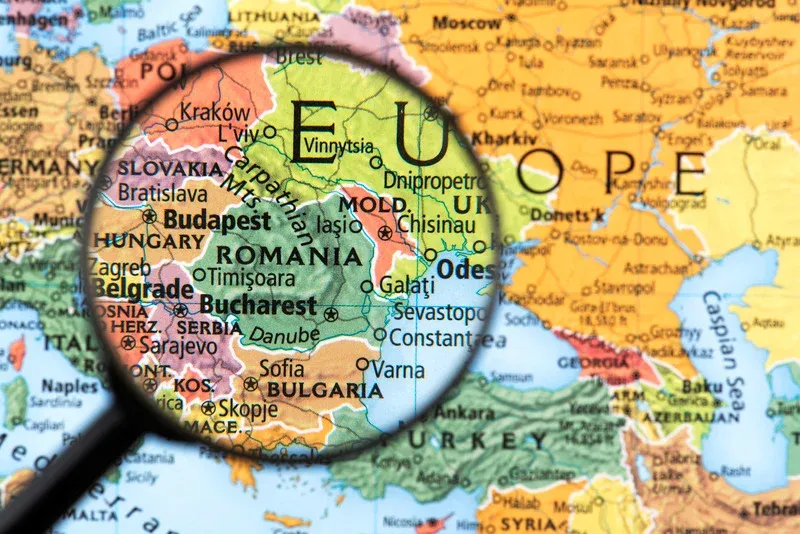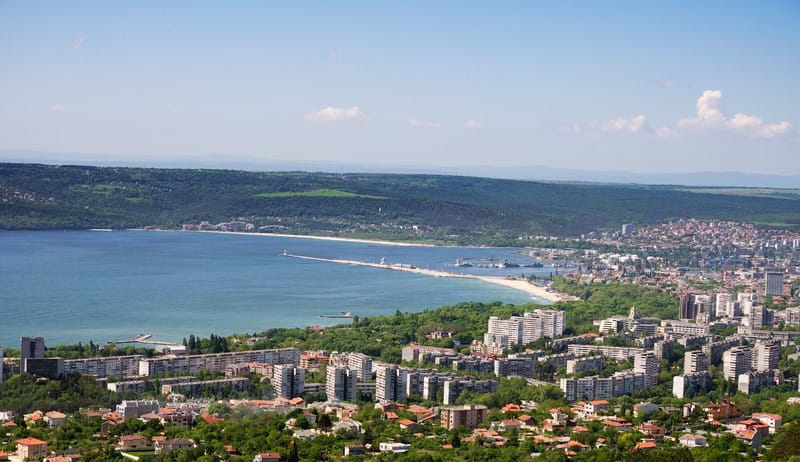Shining a Light on a Disinformation Storm
The need to cover the impact of hybrid warfare on the Black Sea region and the war in Ukraine

This week I want to point you to some recent work from CSD analysts on the spread of WMD-related disinformation in the Black Sea region. I won’t get into the details of the report here. Rather, this report, and more broadly the work on disinformation strategies within hybrid warfare strategies, has heightened my concern about how we–US journalists–cover the war in Ukraine. And how we might provide a more complete picture of the conflict if we spend more time tracking the effectiveness of the Kremlin’s broad state and cognitive capture efforts. As CSD analysts Goran Georgiev and Tatyana Novossiolova note in Disinformation Storm: WMD Hybrid Threats in Romania and Bulgaria:
“Russia’s use of WMD-related disinformation campaigns is particularly malign as these campaigns exploit public perceptions of the gruesome and destructive nature of chemical, biological, and nuclear weapons to achieve political and military objectives. Disinformation is a well-established tool of influence in the Kremlin’s arsenal of hybrid threats.3 The Kremlin’s disinformation strategy generally integrates Soviet-time tactics with the potential of modern information and communication technologies, such as online platforms and social media to increase the scale and speed of disinformation messaging. Media capture is a vivid example of Russia’s sharp power which leverages economic influence to hijack political agendas and shape public opinion in target countries.”
It has been ten years since the Russian annexation of Crimea. And two years since the large scale Russian attack on Ukraine. The 2022 invasion of Ukraine, taken in the context of a longer term Kremlin strategy, can be viewed as a demonstration of a hybrid warfare strategy escalating into an armed attack on a sovereign nation. One question I draw from this to inform our work as journalists through the ever-important, though under-utilized, practice of moving forward by looking back: did we examine and discuss the full scope of Russian foreign policy and hybrid warfare in 2014? Could we have better prepared our audiences to understand the threat to Ukrainians, Ukraine, Europe, and beyond in 2022?

Mitigating the effects of disinformation and cognitive capture is, obviously, not simply the responsibility of those of us in the media. This is another framing issue. The coverage of the day to day physical battles and diplomatic efforts has been consistent, and necessary. It can, however, present a two dimensional picture. I fear without more coverage of state and cognitive capture, the picture is incomplete. We could argue that the allies supporting Ukraine, Europe, and NATO have been losing ground over the last year. There are concerns among many of the people I speak with regularly here in the region that people farther away–physically–from Ukraine have looked away from the war.
I note physically because the larger war is taking place well beyond the battlefields. We might consider media platforms like Facebook, broadcasters, YouTube, etc, all as part of an important theater in the conflict(s) of today. With this in mind I turned to Dr Tatyana Novossiolova, Senior Analyst in CSD’s Law Program, and co-author of your homework the report I’ve referenced above, with some basic questions to help me think about how we should look at disinformation tools as part of hybrid warfare.

GG: Many of us in the States think of disinfo as "fake news." I think this vastly oversimplifies the technique and the threat. You've studied how and why the Kremlin in particular has employed a very adaptable and agile disinformation strategy over the last two decades. Can you explain the importance of this within the larger hybrid warfare strategy?
Dr. Novossiolova: In essence, Russia’s disinformation strategy is a continuation of the Soviet one seeking to advance a self-serving representation of reality. Russia’s disinformation isn’t underpinned by a pronounced ideology, rather, it works by amplifying already existing conspiracy theories with the ultimate goal to picture democratic systems as dysfunctional and corrupt.
GG: While this is a global issue, and the tactics are used well beyond Europe, let's talk about the focus on the Black Sea region in these latest reports. Obviously for the war in Ukraine, this is a critical region. You note that Bulgaria and Romania have been exposed to persistent hybrid warfare tactics. What are some of the tactics to which they have proven to be most vulnerable? And what are the lessons from this region that other nations should pay attention to?
Novossiolova: The Center for the Study of Democracy has done extensive work on Russia’s use of economic influence – through strategic corruption and opaque local networks of patronage – to capture key assets in countries in Europe and Southeast Europe, in particular. The Kremlin’s economic footprint in key sectors such as energy is instructive. But beyond that, Russia projects its economic influence in the media and communications sector to seize control over media broadcasting. Our most recent analysis, the Disinformation Storm report, looks into the effects of Russian disinformation in Bulgaria and Romania and how local pro-Kremlin media outlets enable the wide spread of disinformation narratives in the online media space of both countries.
GG: You mention in the reports that Russia's hybrid warfare strategy preys on societal divisions. Does this involve taking advantage of existing societal divisions? Or do they actually help seed division? Or both? What are some examples of effective tools in building confrontation within countries and regions?
Novossiolova: It’s a mixture of both and here are two examples that illustrate this trend. On the one hand, there is Russia’s tapping into Eurosceptic groups and populist movements as their basic demands align with the Kremlin’s geostrategic interests, that is, weakened EU and even weaker NATO. On the other hand, Russia uses its shared historical and cultural heritage with the countries in Southeast Europe to provoke an emotional response among the population of these countries and sow divisions along geopolitical lines.
GG: From the perspective of a US journalist and analyst of our media, I feel like we are not serving our audiences if we neglect to cover all these aspects of the war. How would you encourage news media in the US, UK, and elsewhere to shine a light on the need to counter hybrid warfare as part of conflict response?
Novossiolova: It's tricky. It is important to highlight the cognitive aspects of Russia's hybrid warfare strategy and show that this strategy pre-dates the war against Ukraine and has had an impact on how the war is perceived in the countries in the region. Russia’s hybrid warfare strategy has a strong cognitive dimension and confronting this challenge requires more than a media response. For a start, it’s important that the countries that Russia readily targets – especially the countries in Southeast Europe – take steps to tackle local vulnerabilities through which Russian influence penetrates. There is also a need to bring the EU institutions and NATO closer to the general public in Member States, as the lack of understanding of their key roles and functions provides a fertile ground for disinformation to flourish.
Thank you for reading Notes from New Europe. This post is public, and we’d like to bring more people into this conversation, so please share.
There is a lot to unpack with these themes, so rest assured we will share more data and analysis of hybrid warfare effects and disinformation—including whether it is time to use a different label and how the terminology is evolving among the experts. We will also explore the intersection between hybrid warfare strategies (beyond the Kremlin’s) and sanction efforts.
In the meantime, get in touch with questions and requests. For further reading:
You can find the full text of Disinformation Storm (in English) here.
And here are some other resources on media capture, disinformation, and propaganda.



